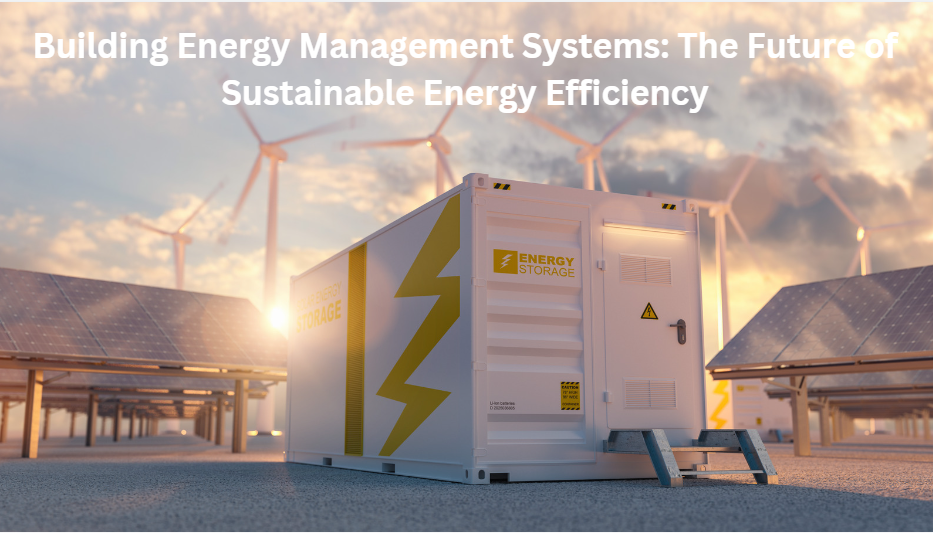In a time when energy usage is a major concern for both economic and environmental reasons, Building Energy Management Systems (BEMS) have become essential solutions for commercial buildings. By monitoring and optimizing energy use, these systems combine multiple operational components, allowing businesses to drastically cut expenses and improve sustainability.
What is a Building Energy Management System (BEMS)?
A commercial building’s lighting, fire safety, HVAC (heating, ventilation, and air conditioning), and other equipment are all integrated into a single software platform by a Building Energy Management System (BEMS). The facility’s overall energy consumption can be thoroughly monitored and managed thanks to this interconnection. Effective management using BEMS can result in significant cost savings and energy efficiency improvements, frequently ranging from 10% to 30%, as energy and utility expenditures account for about 40% of a commercial office building’s overall operating expenses.
Key Components of BEMS
BEMS is made up of hardware and software elements that cooperate to offer control and insights:
• Sensors: These gadgets provide real-time data on environmental parameters including temperature, humidity, and occupancy levels.
• Controllers: Using data inputs, they manage how lighting, HVAC systems, and other equipment operate.
• Data Management Systems: To aid in decision-making, these systems gather, examine, and display data from sensors and controllers.
• Visualization Tools: Dashboards provide an easy-to-use interface for tracking system performance and energy usage.
How BEMS Works
Strong hardware connections are necessary for BEMS to collect operational data and function properly. A Building Management System (BMS), which centralizes control of multiple building systems, is usually the source of this data.
The BMS, which consists of several sensors and controls connected to the building’s infrastructure, is the foundation of building management. The majority of BMS systems communicate via wired connections, including twisted pair wires. Through thorough data collecting and analytics, the system improves energy management capabilities when paired with a BEMS. It analyzes patterns in energy use by obtaining data from the BMS and utility companies. After processing, this data yields insightful information that can be used to benchmark performance, enhance indoor conditions, and lower energy usage, all of which contribute to more sustainable and effective building operations.
BEMS Workflow Example
Consider a situation where a smart building systems is keeping an eye on the air conditioning system in a building. In the event that an alert is set out that suggests a possible cooling valve malfunction, the BEMS examines temperature and pressure change data. The system identifies the problem and suggests a fix, such as checking the valve for damage or making sure it is operating properly, if the anticipated drop in temperature and rise in differential pressure are not observed.
Core Benefits of Implementing BEMS
There are many benefits to implementing intelligent energy systems, especially in energy-intensive areas like HVAC systems, which use around 40% of building energy. These are the main advantages:
Energy Efficiency and Cost Savings: By continually monitoring energy use and enabling real-time adjustments, smart building systems optimizes resource utilization. Because inefficiencies are quickly found and fixed, this skill results in large operational cost reductions.
Improved Building Performance: BEMS raises occupant comfort and productivity by preserving ideal environmental conditions. The systems make sure that energy is used effectively by modifying settings in response to real-time occupancy data. Predictive maintenance tools can also foresee problems before they become serious, reducing downtime and expensive repairs.
Fault Detection and Diagnosis (FDD): When compared to manual inspections, advanced analytics in BEMS offer better fault detection capabilities. The system minimizes the need for manual troubleshooting and expedites maintenance procedures by precisely identifying problems.
Environmental Impact: In line with more general sustainability objectives, efficient energy management with BEMS helps to lower carbon emissions. By implementing a BEMS, buildings can improve stakeholder communication and environmental compliance while obtaining green certifications.
Regulatory Compliance: In order to comply with standards BEMS helps building operators record energy use and efficiency measures. In addition to saving energy, this connection enhances sustainability reporting and operational effectiveness.
Challenges in Implementing and Operating a BEMS
Smart Energy Management Systems offer numerous benefits, but their installation and operation can present a number of difficulties. A BEMS must be compatible with current Building Management Systems (BMS) in order to be effective, and it must be possible to access high-quality data from all critical endpoints in order to reach its full potential. Inaccurate assessments and lost chances for efficiency improvements might result from incomplete data, which frequently calls for system updates. Furthermore, since maintaining maximum performance necessitates developing expertise and frequent system interaction, efficient use of a BEMS requires thorough training and continuous team support.
Future Trends in BEMS
The future of Building Energy Management Systems (BEMS) is being shaped by a number of trends as technology develops further: deeper insights into energy usage and efficiency will be provided by improved data analytics; AI and machine learning algorithms will improve predictive maintenance capabilities by identifying potential system failures before they occur; the growing demand for energy-efficient buildings will have a significant impact on real estate decisions as tenants prioritize sustainability; and the integration of renewable energy sources like solar and wind is anticipated to facilitate a more sustainable energy mix.
Takeaway
Building energy management systems, which optimize energy use and improve building operations, have evolved from basic manual controls to complex, AI-driven solutions. Beyond only increasing operating efficiency right away, a BEMS can help achieve sustainability objectives, comply with regulations, and enhance occupant comfort. Organizations are urged to think about introducing or improving their BEMS as the field of building management changes. In addition to providing benefits right away, this calculated investment sets up buildings for future technology developments. Adopting BEMS is a step toward a sustainable, intelligent, and future-ready infrastructure, not only a move toward energy efficiency.
Contact us at innovate@quotients.com to schedule a consultation and explore the transformative potential of this innovative technology.






